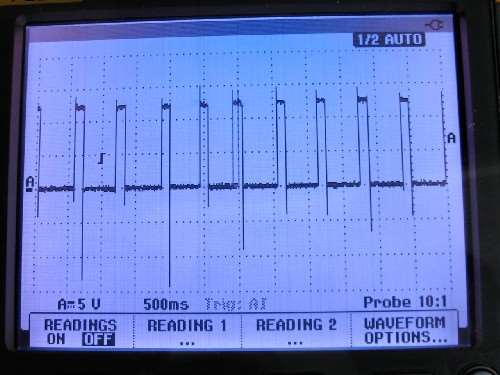Re: 1955-56 Senior instrument cluster
Posted by HH56 On 2016/9/6 11:03:13
You MUST use the regulator to power the gauges and I think since Clippers used the same item it should have at least two gauges connected to the regulator to have an adequate load. Three gauges were connected in the Packard. The regulator needs to be grounded to work but the gauges do not.
The regulator is a chopper device operated by a heater and bimetal strip which pulses 6 or 12v on and off with a frequency and duration that would average 5v being supplied to the gauges. Due to the on/off operation of the regulator it is somewhat hard to get an accurate voltage out reading with a typical VOM.
The senders have a range of 10 ohms at the full, hot or high pressure end and roughly 73-75 ohms at the empty, cold, or low pressure end. The suggested Packard method of checking was to use a spare fuel sender and connect that to the questionable gauge. Service Counselor 27 #10 has the procedure.packardinfo.com/xoops/html/downloads/SC/SC-VOL27NO10.pdf They are testing on a 52 but the 51-56 gauges are the same electrically so the procedure and results are identical.
I don't have any info on the ammeter. Most VOMs have a limited amp measurement range of max 10amps or so. You could find something you can hook in a circuit that is within that range. Measure that with the VOM and then see what the ammeter does with the same item. As someone pointed out recently, in most years Packard called it a battery charge indicator and not an ammeter. I do not know if there is a precise correlation between 10 amps on a meter to a specific deflection of the needle on the gauge. Max generator output was 30 amps so one would think that would be close to full scale on the gauge but since we don't know the capacity or if the gauge is linear that is not a given.
Here is what the output of the regulator looks like. On this example, voltage out is approx 12.6v, duration of pulse about 90-100 ms and frequency about every 400 ms. Those are variables that change by supply voltage in and also by the gauge load in the circuit to get to the average 5v output. I don't remember if I had two or three gauges connected -- three I think.
Attach file:
 (113.04 KB)
(113.04 KB)

The regulator is a chopper device operated by a heater and bimetal strip which pulses 6 or 12v on and off with a frequency and duration that would average 5v being supplied to the gauges. Due to the on/off operation of the regulator it is somewhat hard to get an accurate voltage out reading with a typical VOM.
The senders have a range of 10 ohms at the full, hot or high pressure end and roughly 73-75 ohms at the empty, cold, or low pressure end. The suggested Packard method of checking was to use a spare fuel sender and connect that to the questionable gauge. Service Counselor 27 #10 has the procedure.packardinfo.com/xoops/html/downloads/SC/SC-VOL27NO10.pdf They are testing on a 52 but the 51-56 gauges are the same electrically so the procedure and results are identical.
I don't have any info on the ammeter. Most VOMs have a limited amp measurement range of max 10amps or so. You could find something you can hook in a circuit that is within that range. Measure that with the VOM and then see what the ammeter does with the same item. As someone pointed out recently, in most years Packard called it a battery charge indicator and not an ammeter. I do not know if there is a precise correlation between 10 amps on a meter to a specific deflection of the needle on the gauge. Max generator output was 30 amps so one would think that would be close to full scale on the gauge but since we don't know the capacity or if the gauge is linear that is not a given.
Here is what the output of the regulator looks like. On this example, voltage out is approx 12.6v, duration of pulse about 90-100 ms and frequency about every 400 ms. Those are variables that change by supply voltage in and also by the gauge load in the circuit to get to the average 5v output. I don't remember if I had two or three gauges connected -- three I think.
Attach file:
 (113.04 KB)
(113.04 KB)
This Post was from: https://packardinfo.com/xoops/html/modules/newbb/viewtopic.php?post_id=181457